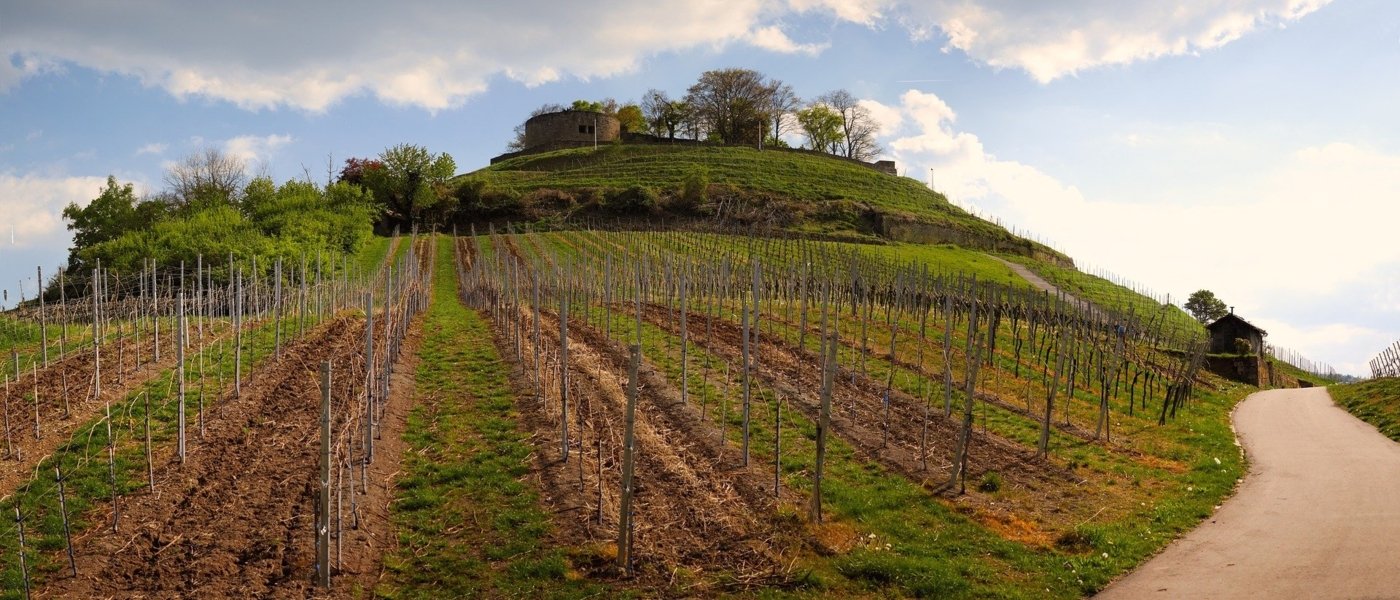Exploring the Langhe around Alba and Asti is sure to be high on the bucket list of any serious wine lover. This is where the noble Nebbiolo holds sway, along with its red stable mates, Barbera and Dolcetto, where you can find the increasingly popular floral-scented Arneis and where you can relive your first sips of aromatic, sparkling Asti. However, the Langhe also holds some undiscovered treasures for any curious wine connoisseur.
Let your Piedmont wine trail also take in some Grignolino d’Asti DOC or Grignolino del Monferrato Casalese DOC. The Monferrato hills are home to pale red, almost rosato Grignolino wines with a spicy tang and orangey colour. Whilst in Asti, also seek out the local Freisa d’Asti DOC, a unique variety, related to Nebbiolo, that is made in dry, sweet and frizzante styles. Taste aromatic, distinctive, berry-scented Ruché di Castagnole Monferrato DOC. Ruché’s main claim to fame is that it can grow where even hardy Barbera won’t mature. Visit Acqui and sample the delightful, aromatic sparkling red Braquetto d’Acqui DOCG with its scents of wild strawberries and rose, and make sure you don’t miss out on Piedmont’s two sparkling red Malvasias, Malvasia di Casorzo d’Asti DOC and Malvasia di Castelnuovo don Bosco DOC. Malvasia di Casorzo d’Asti DOC is also made as a rosé as well as dry and sweet dried-grape passito styles. Malvasia di Castelnuovo don Bosco DOC is made from the Malvasia di Schierano variety and may also be produced as a rosato.
The Piedmont wine trail of Nebbiolo lovers should also lead them up into the north of the region towards Lake Maggiore to sample some mountain Nebbiolos. Gattinara DOCG and Ghemme DOCG, where Nebbiolo is known as Spanna. These wines may also contain a percentage of Vespolina and Uva Rara (also known as Croatina or Bondarda di Gattinara), and are more rustic in nature than their more well-known cousins to the south, but thanks to their prominent tannins and high acidity boast even greater longevity than their noble cousins. Boca DOC and Carema DOC are also Nebbiolo-based wines worth sampling.
Followers of the Piedmont wine trail in search of unusual whites should head back towards the capital, Turin, taking in the town of Caluso on the way. Here you should stop off and taste the local Erbaluce di Caluso DOCG wines. The white Erbaluce grape is named after the goddess Albaluce, who reigned in the area. Erbaluce can be produced a sweet dessert wine Caluso Passito DOCT as well as dry Erbaluce di Caluso and Caluso Spumante. The dry wines are known for their fresh, fruity character with mineral and floral notes. The passito is usually a blend of several vintages and the wine generally matures for at least six years, resulting in a exceptionally perfumed golden nectar.
Your Piedmont wine trail should lead you back to the Langhe to taste a couple more hidden delights. A handful of wineries around the village of Novello have been rediscovering the perfumed Nascetta variety, which produces an expressive crisp white wine with citrus and honey notes.
Round off your Piedmont wine trail with some crisp traditional method bubbly in the Alta Langa DOCG. Whilst not as famous as their counterparts in Lombardy and Trento, Franciacorta DOCG and Trento DOC, these crisp, mineral-driven sparklers based on Pinot Nero and Chardonnay most certainly warrant some attention too.
Let our team of local experts at Wine Paths help you craft your own off-the-beaten-track Piedmont wine trail.
If you're interested in one of our Piedmont Wine Tours, please visit this link.






